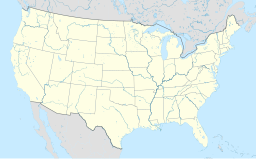Greenville, Illinois
| Greenville, Illinois | |
| City | |
|
Bond County Courthouse is located in Greenville's public square. The Bond County Soldiers and Sailors Monument is located on the courthouse grounds.
|
|
| Country | United States |
|---|---|
| State | Illinois |
| County | Bond |
| Elevation | 500 ft (152 m) |
| Coordinates | 38°53′N 89°24′W / 38.883°N 89.400°WCoordinates: 38°53′N 89°24′W / 38.883°N 89.400°W |
| Area | 6.19 sq mi (16 km2) |
| - land | 6.19 sq mi (16 km2) |
| - water | 0.00 sq mi (0 km2) |
| Population | 6,959 (2014) |
| Density | 1,130.9/sq mi (437/km2) |
| Founded | Municipal corporation, 1872 |
| Mayor | Alan Gaffner |
| Timezone | CST (UTC-6) |
| - summer (DST) | CDT (UTC-5) |
| Postal code | 62246 |
| Area code | 618 |
|
Website: www |
|
Greenville is a city in Bond County, Illinois, United States, 43 miles (69 km) east of St. Louis. The population as of the 2010 census was 7,000. It is the county seat of Bond County.
Greenville is part of the St. Louis Metropolitan Statistical Area. It is also considered part of the Metro East region of Illinois.
Greenville celebrated its Bicentennial in 2015 as one of the oldest communities in Illinois. It is home to Greenville College, the Richard Bock Museum, the American Farm Heritage Museum, the Armed Forces Museum and the Demoulin Museum and a federal prison, Federal Correctional Institution, Greenville (FCI Greenville). It is also home to internationally known companies, including Nevco Scoreboard, the largest privately owned scoreboard company in the world, and DeMoulin Brothers, the world's oldest and largest manufacturer of band uniforms.
Greenville was founded by George Davidson in 1815 in what was then the Illinois Territory, when he purchased 160 acres (65 ha) along the bluff overlooking Little Shoal Creek, in what was then still part of Madison County. Davidson built a tavern near the present-day intersection of Main and Sixth streets, and by 1816 he was selling individual lots. The federal government established its first federal post office in Greenville in 1819. It was incorporated as a town in 1855 and as a city in 1872. At one time, it had neighborhoods called New Jerusalem, Piety Hill, Cobtown, and Buzzard Roost. A few possible reasons have been put forth for the naming of the town. Some think the town was named after Greenville, North Carolina, which had been named after Revolutionary War general Nathanael Greene. Others say that Greenville was named by early settler Thomas White because it was "so green and nice". A third possibility is that Greenville was named after Green P. Rice, the town's first merchant.
...
Wikipedia



